
Article contents

The best Stocks and Shares ISAs are Moneyfarm and Beach – they have great investment performance, low fees and are super easy to use. If you want to manage your own investments, the best Stocks and Shares ISAs are Lightyear and InvestEngine – they’re low cost and have a great range of investments to choose from.
Keen to invest your hard earned money in a Stocks and Shares ISA? Great idea. Your future self will really thank you. Using a Stocks and Shares ISA with a great investment strategy for long-term growth, can really be a game changer for your financial future.
We’ve carried out an in-depth Stocks and Shares ISA comparison to determine the current best Stocks and Shares ISAs. So, and without further ado, here they are:
Beach is an easy to use investment app where experts invest your money sensibly. Save within an Stocks & Shares ISA and/or pension pot.
Easy to use



A great and easy to use investing app. Add money from your bank or transfer your existing ISA, with the investments handled by experts. There’s a pension pot too.
The customer service is excellent, and has email and phone support based in the UK.

Beach is an easy to use investing app (and easy to set up), just add money and the experts handle everything. It’s all managed on your phone with a great app, and you can see your total savings whenever you like.
You’ll get an easy access pot (access money in around a week), which can be an ISA where all the money you make is tax-free (save up to £20,000 per tax year), and a standard account for those saving in addition to this (or who don’t want an ISA), where there’s no contribution limits (but also no tax-free benefits).
The investments are managed by experts from the largest investment company in the world (BlackRock). And they consider things like reducing climate change, meaning your savings could make the world a little better in future too.
There’s also an optional pension pot to save for retirement, so you can keep all your savings in one place, and if you’ve got lost or old pensions, Beach can also find them and move them over too.
Fees: a simple annual fee of up to 0.98% (minimum £4.99 per month).
Minimum deposit: £25
Customer service: excellent
Pros:
Cons:



Moneyfarm is a great option for saving and investing (both ISAs and pensions). It's easy to use and their experts can help you with any questions or guidance you need.
They have one of the top performing investment records, and great socially responsible investing options too. Plus, you can save cash and get a high interest rate.
The fees are low, and reduce as you save more. Plus, the customer service is outstanding.

Pros
Cons
Beach is an easy to use investment app where experts invest your money sensibly. Save within an Stocks & Shares ISA and/or pension pot.
Beach is an easy to use investment app where experts invest your money sensibly. Save within an Stocks & Shares ISA and/or pension pot.
Get up to £100 free share



Lightyear is an awesome mobile app with very low cost investing.
There’s a decent range of investment options (over 4,000 stocks and ETFs), you can store multiple currencies, and the app itself is modern and super slick.
ETFs are commission-free, and stocks are max. £1/$1/€1 per order. There's also very low currency conversion fees of 0.35%, or you can hold the currency itself and avoid this fee.
You can invest with a tax-free ISA, a regular account and a business account.
And if you’ve got cash savings, you’ll also get one of the best rates possible with their Cash ISA (it matches the Bank of England base rate).

0% fees



InvestEngine is a super low cost investment platform allowing you to save and invest within a pension and an ISA, and with a great range of investment options.
There's no fees for an account, and no commission to buy and sell investments. And there’s a wide range of investment options, with over 700 investment fund options (ETFs only).
It's more than just low cost though, it’s pretty easy to use, there’s some great features to help you invest, and the customer service is excellent.




AJ Bell is well established, with a good reputation.
It's one of the cheapest traditional stock brokers out there (charging a low annual fee).
There's a huge range of investment options – pretty much every investment out there (including both funds and shares).
The customer service is great too.
Overall, it's one of the best options.

There’s lots of Stocks and Shares ISAs in the UK to choose from, here’s the criteria we used to find the best:
The investment platforms (places to invest) above are all platforms we regularly recommend to our friends and family (and readers of course). And we use them ourselves here at Nuts About Money (either a General Investment Account, Stocks & Shares ISA, a Junior ISA or a pension – more on those types later).

They’re all great, and whichever one you choose, you can be confident your money is with a trustworthy and responsible provider, and if you’re with an expert-managed platform, excellent experts will be looking after your investments.
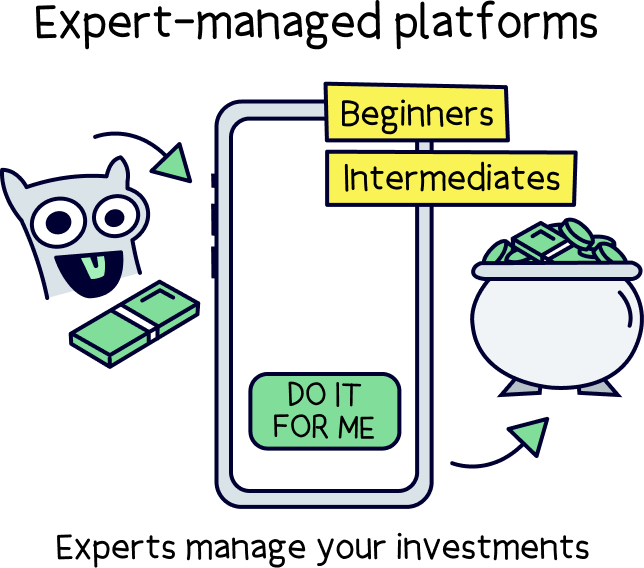
If you are still a bit unsure which of the best Stocks and Shares ISA to use, we recommend Beach¹ it's an easy to use investment app where experts invest your money sensibly over time. Save within an Stocks & Shares ISA¹ and/or pension pot¹. Plus, the customer service is excellent.
A Stocks and Shares ISA (Individual Savings Account) is one of the best savings and investments accounts you can get in the UK. Everything you save into an ISA is completely tax-free, forever! That means that as your money grows, all the money you make is completely free of tax.
So, you won’t pay any Capital Gain Tax, Income Tax, or Dividend Tax at all. Ever! These are types of taxes that you’d sometimes have to pay on investments, especially once they build up to large amounts over time (which hopefully, your ISA will). We’ll cover all this just below.
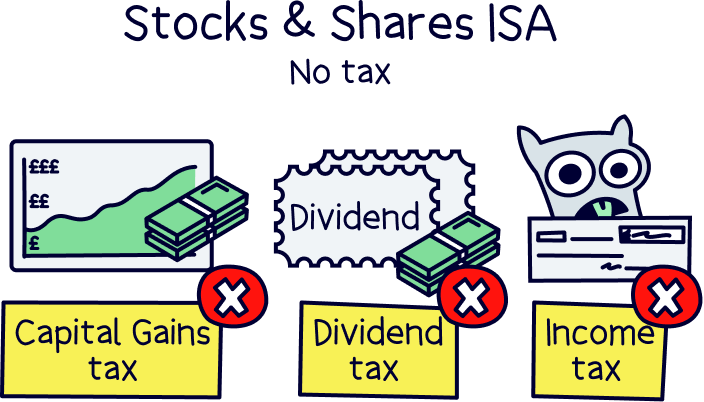
There are limits however, you can only invest up to £20,000 per tax year into your ISA, and this is your annual ISA allowance. This actually applies to all of your ISAs combined. For instance, if you are also saving into a Cash ISA (just for saving cash), or a Lifetime ISA (saving for your first home).
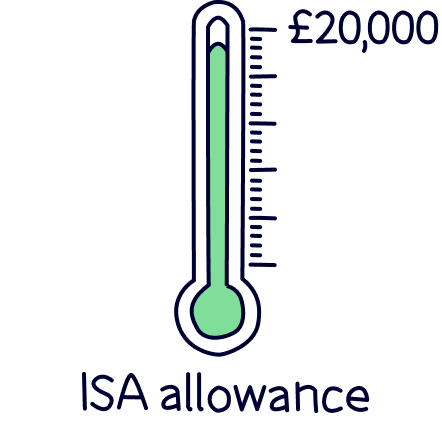
Note: these can also be called investment ISAs – it’s just another word for it.
Capital Gain Tax is one of the most common and this is where you’ll pay a tax on your profits within a tax year, if you make a profit of over £3,000 (when you sell investments).
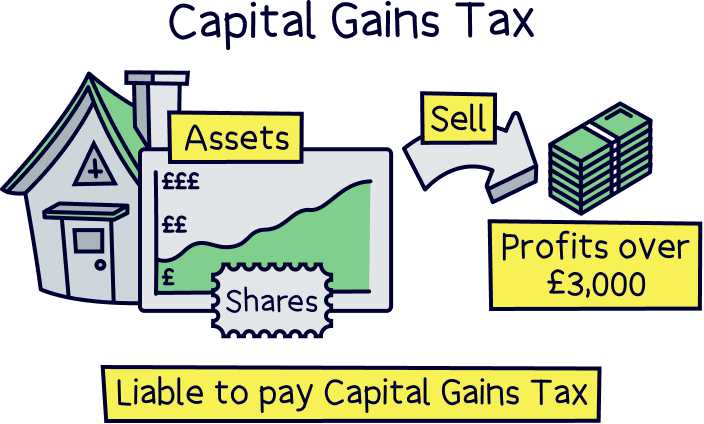
The amount you’ll pay is 10% if you earn less than £50,270 per year as an income (e.g. your salary), or 20% if you earn over £50,270 per year.
Income Tax is what you’d pay if your investments generate interest payments, rather than increase in value. This is the same type of tax that you’ll pay on your salary now (if you work).
Dividend Tax is what you’d pay if you receive dividends from your investments, which are where companies pay out their profits to their shareholders (people who own shares). Although you have a dividend allowance each tax year, before you have to pay any tax, this is currently £500.
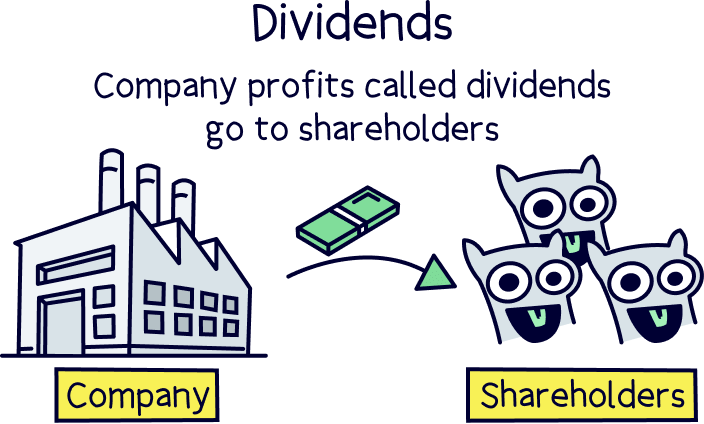
If you’re just getting started with investing, we recommend you go for an expert-managed Stocks and Shares ISA. This way, the experts simply manage your money and grow it using a sensible investment strategy over time. All you need to do is add your money and put your feet up!
Our top recommendation is Beach¹, they offer a tax-free Stocks & Shares ISA¹ managed by a team of experts and you can even set up a pension pot¹ too. It's also easy to use with a great app. Here’s our Beach review to learn more. To see all our options check out our top Stocks & Shares ISAs.
Alongside a Stocks and Shares ISA, there’s also a range of different investment accounts, all suited for different goals.
A General Investment Account (GIA), or sometimes called a share dealing account, is a no-frills investment account with no tax-free benefits. However, there’s no limits on what you can invest, and you can have as many as you like on different investment platforms (also called stock brokers).
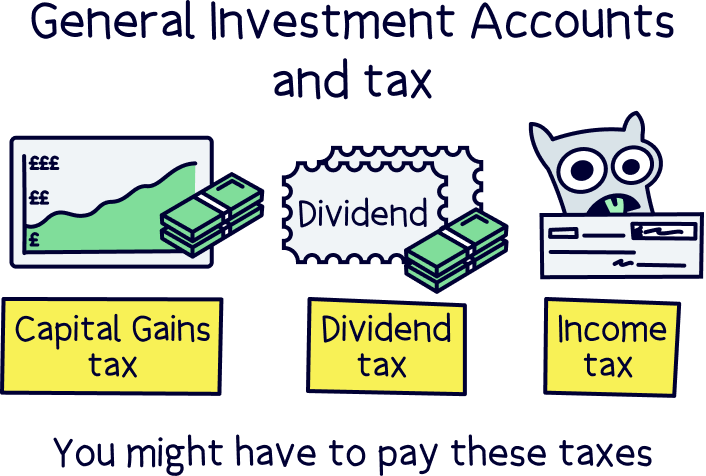
They’re a great idea for investing alongside an ISA, perhaps to make your own investments while the experts manage your ISA. Or, you could use them to trial an investment platform before you commit to an ISA (remember you can only open and pay into one of these per tax year).
You can open a GIA with all of the Best Stocks & Shares ISAs too (scroll up).
Personal pensions are perfect for building up a nice big pension pot for retirement in addition to your workplace pension (a pension set up by your employer) if you have an employer.
You won’t pay any taxes as your money grows, and the government will add a massive 25% to your contributions, all automatically (we’re not joking!).
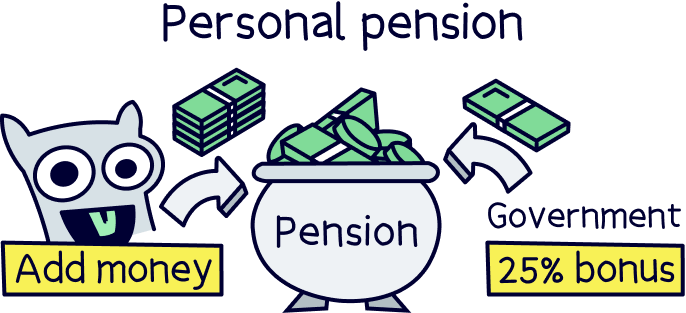
And if you’re a higher rate taxpayer (40%), or additional rate taxpayer (45%), you can claim some tax back at these rates too. You’ll do this on your Self Assessment tax return.
There’s two main types of personal pensions, a regular personal pension managed by experts (such as the highly recommended PensionBee¹), or you can make your own investment within a self-invested personal pension (SIPP). You can view all the best options for both with the best pension providers.
Note: you can have as many personal pensions as you like, so you could have a personal pension managed by the experts, and one managed by yourself. However, it’s not often a good idea to have too many pensions, they can get lost and you might miss out on some great benefits (lower fees and higher growth). Learn more about how to consolidate pensions.
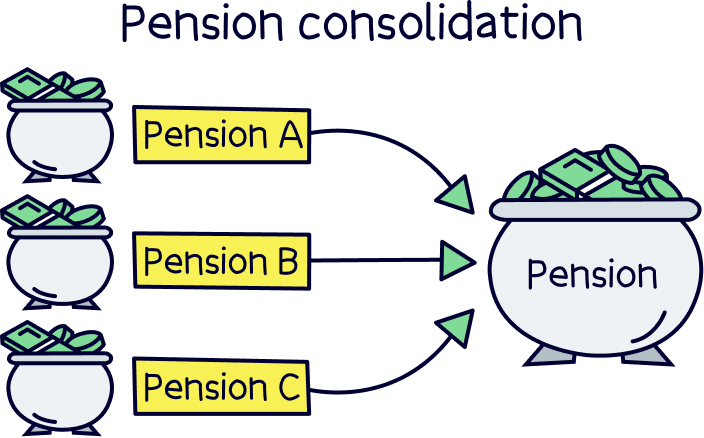
However, you can’t withdraw money until you’re at least 55 years old (57 from 2028), so make sure you can live without it for a while if you are younger.
We recommend keeping it invested for as long as you can, this will give it the best chance to grow into large amounts. When you do withdraw cash, the first 25% is completely tax-free, which you can take as a tax-free lump sum if you like. With the remaining 75%, you might have to pay Income Tax (it depends on your income when you retire).
Junior ISAs are great for saving for your kids (if you have them). You can save up to £9,000 per year, separate to your own ISA allowance, and it’s all in their name – and they’ll receive it when they turn 18.
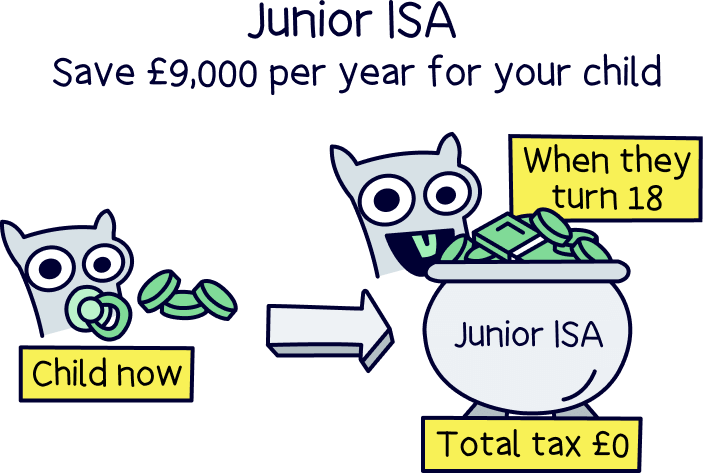
One of the best Juniors ISAs is Moneyfarm¹ – you’ll benefit from the same great performance as their Stocks & Shares ISA. Plus low fees and help from the experts. Here's the best Stocks and Shares Junior ISA.
A Lifetime ISA is a great savings account for saving for your first home. You’ll be able to save up to £4,000 per tax year (as part of your ISA allowance), and you’ll get a 25% bonus on your contributions (so up to £1,000 per tax year free).
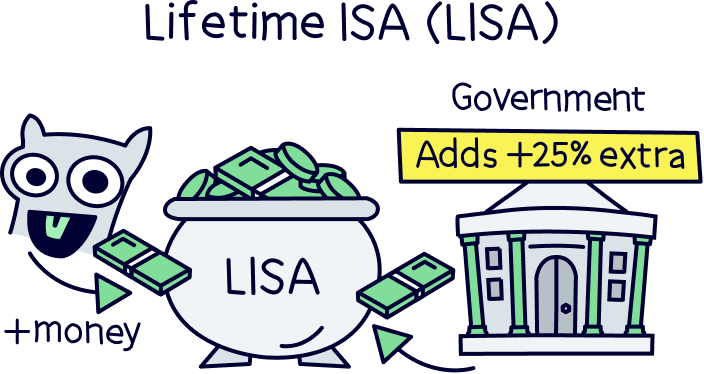
If you don’t use this for your first home, you’ll have to wait until you’re at least 60 to withdraw the cash, unless you pay a fairly hefty fee of 25% (which is actually more money than the bonus you get in the first place). If you want a Lifetime ISA check out the top 10 Lifetime ISA providers.
This is where you can lend your money to other people (via a platform / website) in return for interest payments (which are tax-free). This is called peer-to-peer lending.
ISAs are one of the best saving and investing accounts you can get, but how do they actually work? Let’s run through the two main types, letting the experts handle things for you, or investing yourself.
Letting the experts handle things for you is a great way to grow your money over time. Best of all, you don’t need to do a thing, just add your money and let the experts get to work. It’s a stress-free way of building your savings via long-term investing, as you’ll be in safe hands.
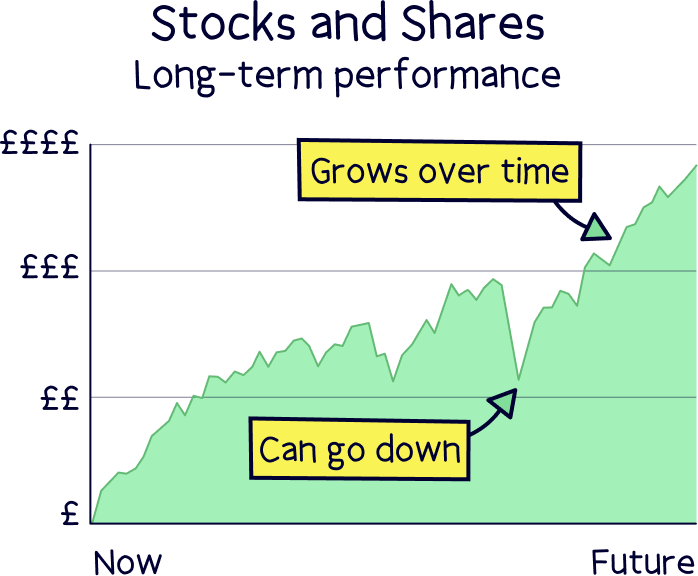
Here’s what the experts actually do:
First, they’ll need to figure out which is the best investment strategy for you. They’ll do that by asking you a few different questions about your investing goals, investing preferences and how much risk you’d like to take with your money (don’t let the word risk put you off).
What that means is that after you sign up on their mobile app or website, there'll just be a few questions to answer about you, such as if you’d like to invest in socially responsible investments (e.g. no fossil fuels), also called ESG (environmental, social, governance). And, how much risk you’d like to take with your money…
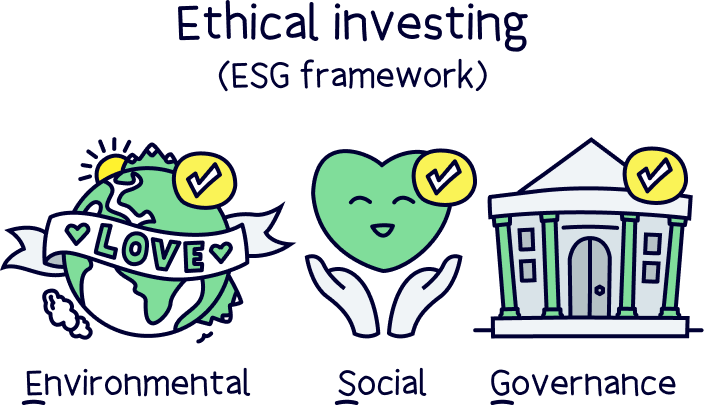
With a higher risk option, your money is likely to grow much more over the long-term, but there will be more ups-and-downs along the way. Whereas with a lower risk option, there will be less ups-and-downs but your money is likely to grow slower.
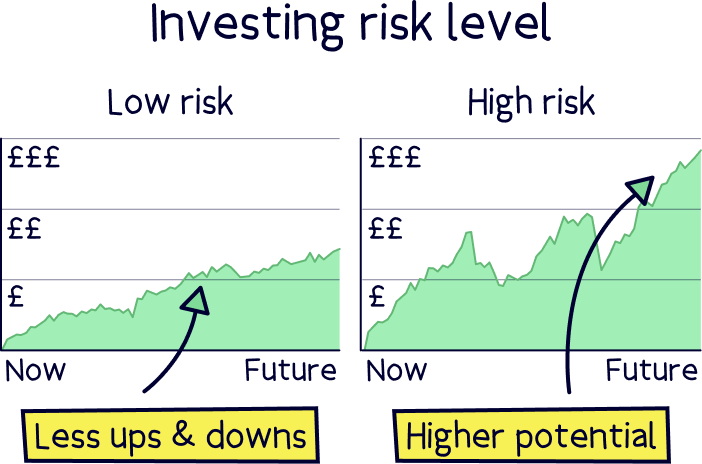
If you’re not looking to access your money any time soon (more than 5 years), it’s often better to go for higher risk options, although it’s completely up to you and your comfort levels.
The experts will then invest your money in a range of different investments, such as stocks and shares, investment funds, bonds and sometimes property (we’ll cover these in detail below), all suited to the risk option that you’ve chosen. And, suited to your investment style, for instance ESG and impact investing (positive impact on the world).
This can be very complicated, and to build a well diversified investment portfolio (your total investments) takes a lot of knowledge and experience – that’s why we often recommend simply letting the experts handle things!
However, you always have the option to make your own investments within an investment ISA if you like, let’s run through that now.
If you’d like to manage your investments and make your own investment decisions within your investment ISA, you can easily do this – although we only recommend it for experienced investors!
Note: these types of ISAs are sometimes called self-select Stocks and Shares ISAs, or ‘Do it Yourself’ ISAs (DIY ISAs).
Once you’re signed up to the self-managed investment platform you'd like to use, you’ll be able to invest in any investments you like (providing they’re on the platform).
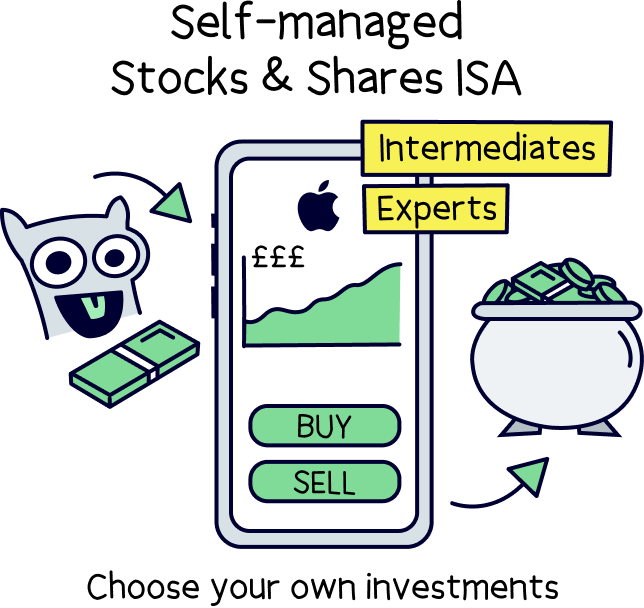
You could build your long-term investment portfolio (highly recommended), by using a mix of the right investments, or you’d buy and sell investments as and when you like, aiming to make a profit over the short-term. With all the benefits of tax-free investing!
Although if short-term trading (called day trading) is your plan, you could consider using a General Investment Account (GIA), or even a CFD trading platform (Contract For Differences) instead of an investment ISA. And then use your ISA benefits with an expert-managed investment platform, and benefit from both styles of investing!
If trading sounds like something that might interest you – check out our recommended trading platforms.
Stocks and shares are where you buy and own part of the company, you buy a ‘share’ of the company. All the shares combined equal the total valuation of the company (it’s market capitalisation), and so each share can rise or fall in value, usually depending on how the business performs (e.g. increases sales).
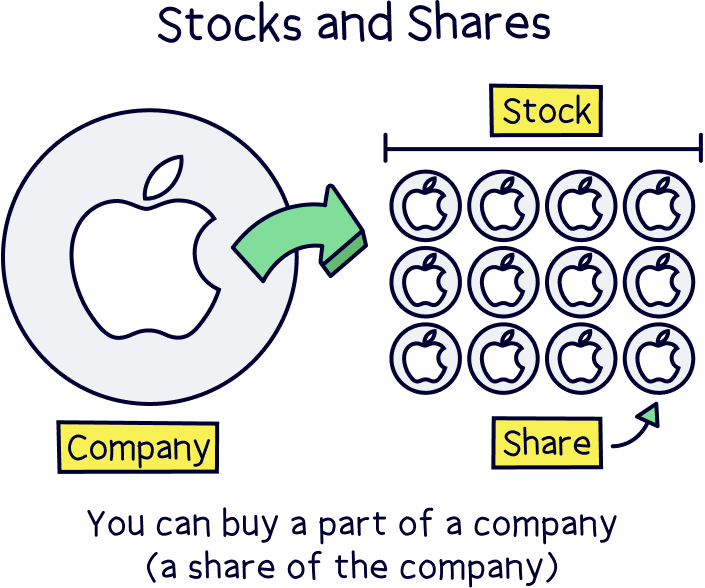
A company can also pay out its profits to shareholders, and this is called dividends.
Shares are traded (bought and sold) on stock exchanges (often also called the stock market), and there’s typically at least one stock exchange in every country in the world. For instance, in the UK we have the London Stock Exchange (LSE), and in the USA, they have the New York Stock Exchange (NYSE), plus others.
Investment funds, also known as mutual funds, are a collection of lots of different investments (for instance lots of individual shares) all pooled together into a single investment that you can buy. This is typically managed by experts, called fund managers.
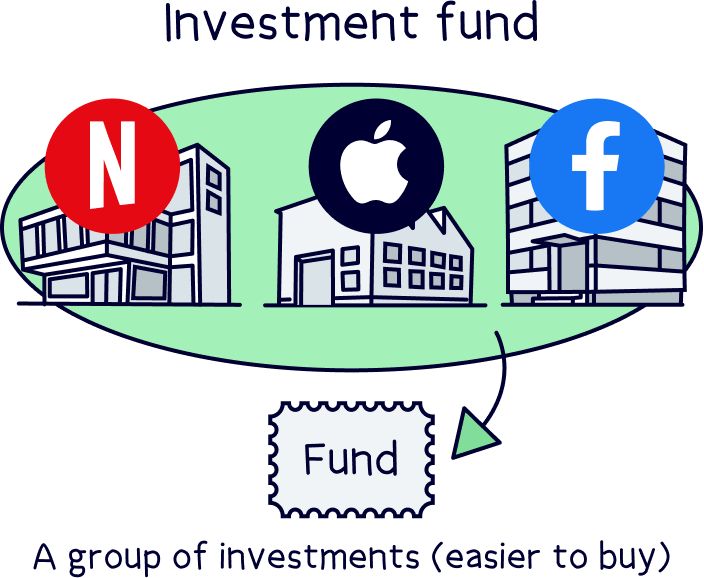
There can be all sorts of different investment funds, for instance, a popular fund is the top 100 companies in the UK (called the FTSE 100), and there’s mutual funds that have all electric car companies, or all green energy companies – the possibilities are endless!
Lots of popular investment funds trade on stock exchanges, and these are called exchange-traded funds (ETFs). This makes buying and selling the funds super easy, and they are very popular.
There two main types of investment funds: passive funds and actively managed funds.
A passive fund tracks a group of companies of the stock market (called a stock index), for instance, one tracks the top 500 companies in the US (S&P 500). Often these are called tracker funds too (for obvious reasons). These typically have lower fees as there’s less involvement from real people (the experts).
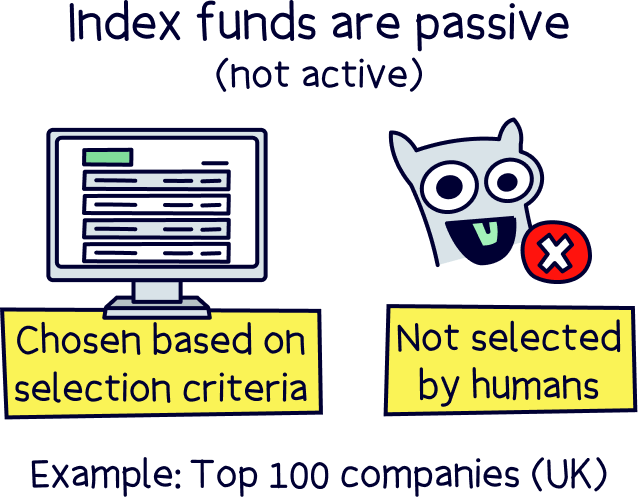
Actively managed funds are where the experts manage the fund. They are called the fund manager, and they aim to achieve a goal, which could simply be long-term growth, or provide a regular income. And they’ll put together the right mix of investments, and continually manage and adjust the investments to achieve the goal.
A bond is where you effectively loan your money to a government or a large corporation (called corporate bonds) in return for interest payments. These are often seen as lower risk than stocks and shares (equities).
You can also invest in commercial property, such as shops and offices, which pay a rental income.
To grow your money as much as possible over the years, having a top performing ISA can make a real difference vs a lower performing ISA (in terms of investment growth).
The difference in performance can have a huge impact over the long term thanks to compound interest – which is where the money you make begins to make you money too, and this snowballs over and over – meaning small differences now, can result in big differences later down the line!
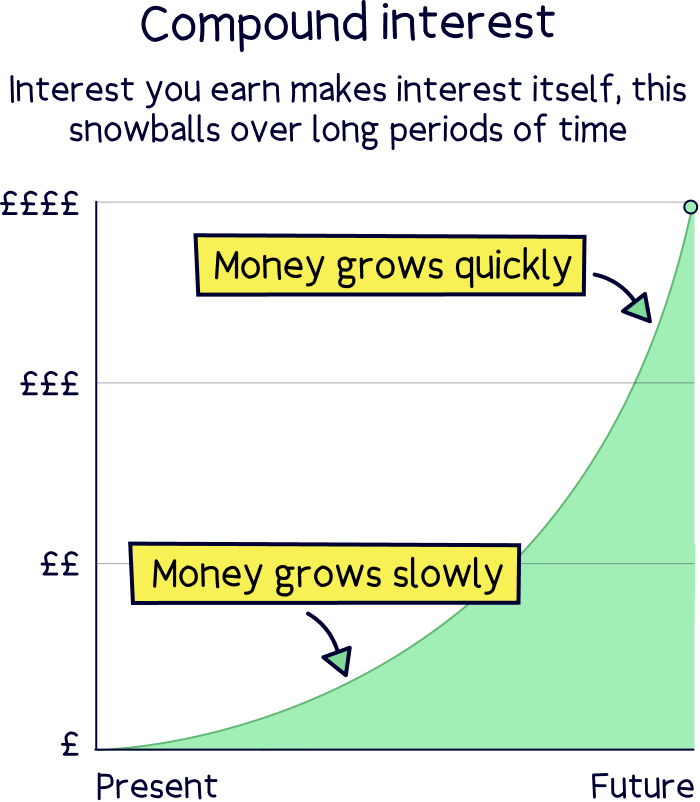
We’ve used the previous (last 5 years) investment performance of expert-managed Stocks & Shares ISAs to determine the best ISAs.
Note: previous investment performance should not be used as a measure of future performance, but it can be an indication that the experts managing the investments are pretty great and are using sound investment strategies - and therefore can be reassuring that your money could be in good hands going forward.
We’re just going to share an overview of our analysis, for a full run-through, check out the best performing Stocks and Shares ISAs.
When investing with experts, there’s typically a range of investment options categorised into risk risk levels, which we’ll explain in more detail below. And we’ve used 4 common categories:
We looked at the most popular investment ISAs managed by experts; Nutmeg, Wealthify, Moneyfarm and the industry average (more on that below). And we looked at their performance over the last 5 years.
For the industry average, we looked at data from an expert investment firm called Asset Risk Consultants (ARC), this is a well recognised company that tracks the investment performance of lots of different investment funds (managed by experts).
Using that data, they have developed an average to measure investment performance. These averages are called indexes, and the 4 indexes we’ve used are:
After analysing the investment performance of the 3 most popular ISAs and industry average, here’s the winners for each category:
The winner in every single category, and by quite a margin was Moneyfarm! They performed phenomenally well. Not only did they beat both Wealthify and Nutmeg (by a lot), but they also beat the industry average too – by quite a bit.
On the surface, beating the average might not seem a lot, but in investing it’s extremely difficult, and Moneyfarm have performed well above the average. It’s very impressive.
Here’s the actual results for each category:
Investment performance over the last 5 years.
Investment performance over the last 5 years.
Investment performance over the last 5 years.
Investment performance over the last 5 years.
Just like investment returns (ISA performance), fees can have an impact on the long-term growth of your money. With higher fees, your money will grow a bit slower each year, and this can have a big impact over time.
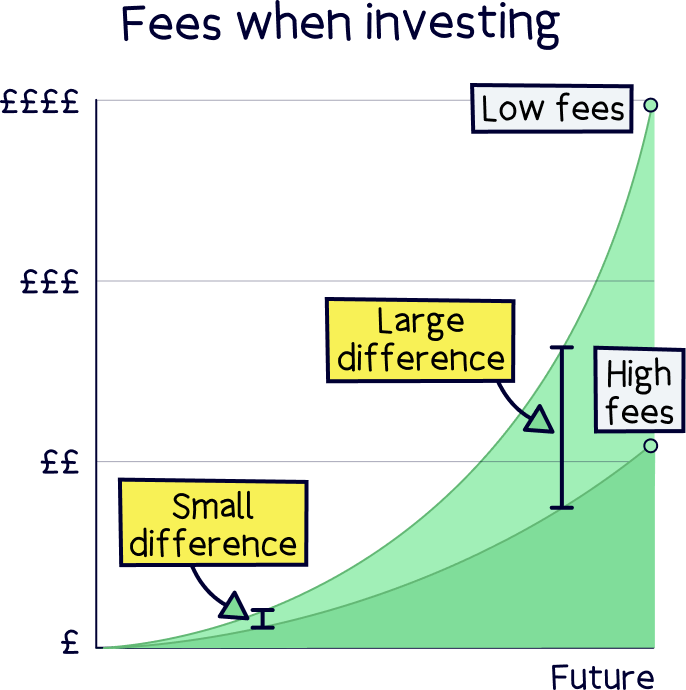
However, we don’t recommend simply going for the lowest cost – it’s a balance between the performance, the investment options, ease of use and expert support, which will be different for each of us.
There's different fees for expert-managed Stocks and Shares ISAs and self-managed, so we’ll cover them separately.
With expert-managed ISAs, you’ll typically pay an annual management fee to the Stocks and Shares ISA provider, and then you’ll pay a management fee for the investments themselves, and sometimes a small trading fee when the experts buy and sell investments. These are all typically a percentage of the amount you have invested, and can range from anywhere from 0.25% to 1.5%+.
When comparing the best Stocks and Shares ISAs, we found the best value annual management fees were:
Wealthify: this is a fixed fee of 0.60% however much you have invested.
Nutmeg: this starts at 0.75% and only reduces to 0.35% if you have £100k saved.
Moneyfarm: this starts at 0.75% and gradually reduces once you have over £10,000 saved, all the way down to 0.35%.
Overall, they’re all fairly similar, but if you have a lower amount invested (less than £10,000), Wealthify is the cheapest, and as you save more, Moneyfarm becomes the cheapest.
However, these fees are in addition to the investment fees. Let’s run through them.
As your money is invested into investment funds, these have fees too. And it depends on which ISA provider you use, as to what investment fund your money will be invested in. We’ve combined the investment fund fees with the trading fees into a single fee to make it easier to understand.
Putting that all together, for an average investment ISA of an example £20,000, here’s what you’d expect to pay:
That puts Wealthify as the cheapest for the classic plan (non-ethical investments), but the most expensive by far for the ethical plan.
Following that, Moneyfarm (0.94%) and then finally Nutmeg (1.03%).
For the ethical plans, it’s Moneyfarm cheapest (0.95%), followed by Nutmeg (1.12%) and then Wealthify (1.30%).
We’re big fans of ethical investing here at Nuts About Money, and find Moneyfarm’s¹ fees very reasonable – but overall, there’s not too much in it, and we don’t recommend you make a decision based on fees alone – we’ve looked at everything, especially the investment performance (where Moneyfarm performed exceptionally well).
With self-managed investment ISAs, the fees are a bit different, as it all depends on what you want to invest in.
Typically, you’d pay an account fee to hold your investments (sometimes called a custody fee or platform fee), and then a fee when you buy investments (called a share dealing fee). That’s the traditional stock broker pricing method anyway.
However, with the more modern investment platforms, they’ve done away with these fees – there’s almost no fees at all!
What you’ll normally pay is a currency conversion fee if you want to buy investments that aren’t from the UK (and so not in Pounds), for instance US stocks priced in Dollars – where you’ll need to convert your Pounds to Dollars to buy.
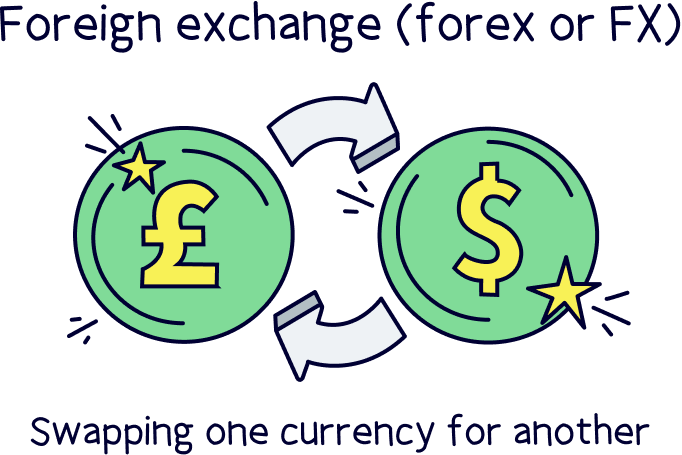
However this can be super low too – and with Trading 212¹, it’s just 0.15%. Plus you can get a free share worth up to £100. Use code NUTS.
InvestEngine¹ also has no account fees or dealing fees – although you can only buy exchange-traded funds (ETFs).
One of the lowest cost traditional stock brokers is AJ Bell – they’ll charge an annual fee to hold your investments (0.25% of the amount invested, and capped at £3.50 per month for shares), and a fee to buy each investment from £1.50 to £9.95). Learn more with our AJ Bell review.
For larger balances (over £30,000), there’s also Interactive Investor, who charge a flat fee (£4.99 to £19.99) per month, as an account fee, rather than a percentage of your investments. And £5.99 fee to buy investments (per investment). Learn more with our Interactive Investor review.
Not quite sure if a Stocks and Shares ISA is a good option for you? Perhaps you’re not sure if you should go with a Cash ISA instead. Let’s do a quick run through.
Both types of Individual Savings Accounts (ISAs), have tax-free benefits (i.e. no tax to pay) – however your money will likely grow far more over time within a Stock and Shares ISA, providing you use a sensible investment strategy (ideally managed by experts).
With a Cash ISA, you’ll simply earn interest on your money, and that interest is tax-free (so you won’t pay Income Tax). However, they’re not very popular these days, as you actually get a tax-free savings allowance separate to an ISA, which is called your Personal Savings Allowance, and saving into a Cash ISA uses up your £20,000 annual ISA allowance.
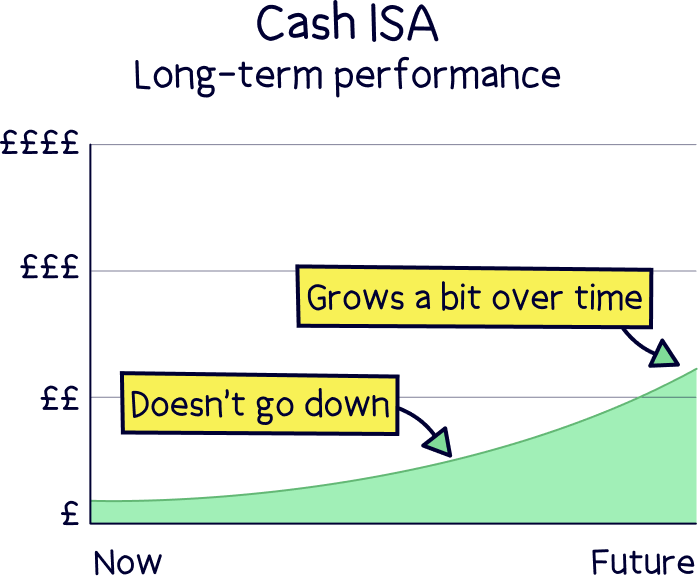
Your Personal Savings Allowance lets you earn up to £1,000 in interest per tax year, tax-free. Here’s the exact allowances:
If you earn under £12,570, then any income you make isn’t taxed as this is your Personal Allowance (tax-free income allowance).
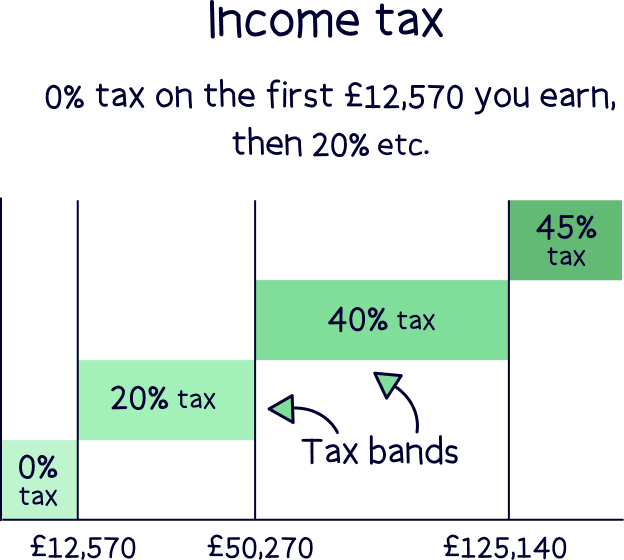
To earn £1,000 in interest per year, you’ll need around £33,000 in savings at a 3% interest rate. So, depending on your individual circumstances, you might not need to save within a Cash ISA until you build up a nice big savings pot, and can simply use a regular savings account instead.
However, as a rule of thumb, investing your money sensibly could return around 7% per year on average.
Investments such as in the FTSE 100 (the top 100 companies in the UK), have made an average of 7.8% per year (LSE). So, you could be missing out on quite a bit of cash over time! (This is just an approximate figure as the value of the FTSE 100 continually changes.) Here’s how to invest in the FTSE 100.
Typically we recommend cash savings if you’re going to need to cash in the short-term (1-5 years), and invest within a Stocks & Shares ISA (or pension), for long-term savings (5 years+). The difference you could make over time can be seriously big!
If you’re interested in learning more, here’s our guide to a Cash ISA vs Stocks and Shares ISA.
Yep! It’s perfectly safe to save and invest into a Stocks and Shares ISA.
Every Stocks and Shares ISA is authorised by the Financial Conduct Authority (FCA), these are the people who make sure companies are looking after your money and treating you fairly. This means your ISA provider has been reviewed in-depth and approved, and is continually reviewed.
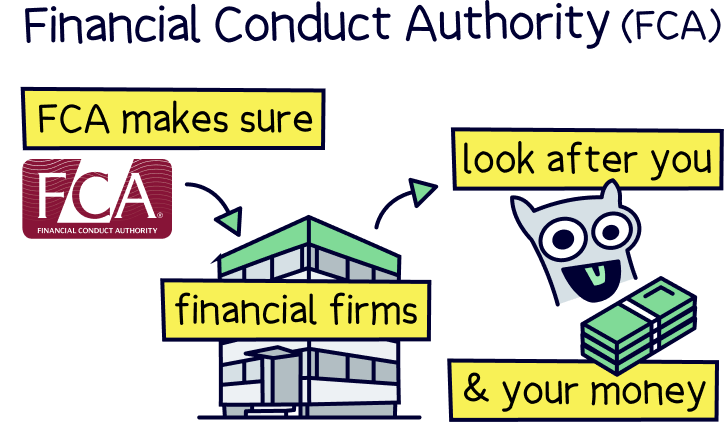
You can check if a financial firm is authorised by the FCA by checking the FCA register.
This also means you are protected by the Financial Services Compensation Scheme (FSCS). This is where you’re protected for up to £85,000 in compensation should anything happen to the ISA provider such as going out of business. Although this is very unlikely.
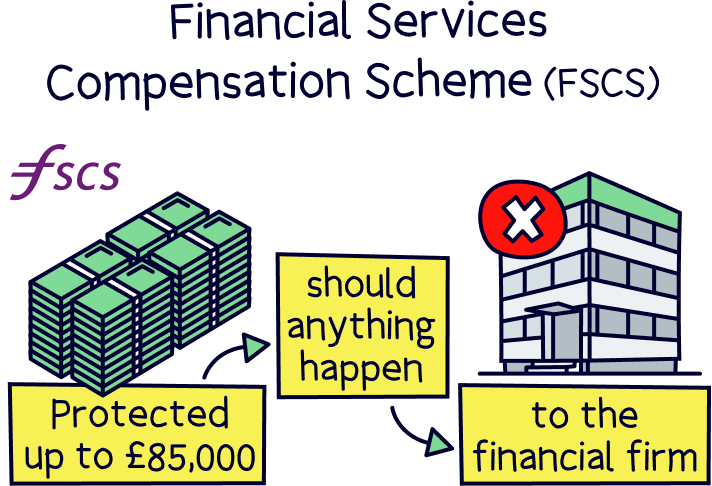
Making it even safer, your investments are actually held with a large bank, separate from your ISA provider, and held all in your name, and they can only be returned to you.
However, this doesn’t mean your investments can’t go down in value and lose money. It’s always best to use a sensible investment strategy for long-term investing. And we typically recommend letting the experts handle things for you.
There we have it. The best Stocks and Shares ISAs are listed above. We hope that made comparing ISAs more manageable, and you’ve learnt a lot about investment ISAs in general – a great tax-free savings account.
A Stocks and Shares ISA is typically much better for saving over the long-term than a traditional savings account (with cash savings) – your money is likely to grow more if it’s invested using safe and sensible investment strategies for long-term growth (plus you won’t have to pay tax!). And for that, we highly recommend letting the experts handle things.
Looking for more information? Head over to our investing home page.
Thanks, for reading – and all the best with investing for the future!
Beach is an easy to use investment app where experts invest your money sensibly. Save within an Stocks & Shares ISA and/or pension pot.
We’d love to hear from you, and it will help others too.
Beach is an easy to use investment app where experts invest your money sensibly. Save within an Stocks & Shares ISA and/or pension pot.